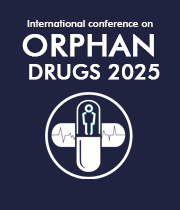Title : Novel polyphenolic compounds from Mangifera indica as promising alternatives for treating strongyloides stercoralis infections
Abstract:
The rapid spread of Strongyloides stercoralis has raised significant public health concerns, affecting more than 600 million individuals globally. With increasing global migration, there is a potential rise in transmission, leading to the urgent need for effective treatment. To investigate ten polyphenolic phytochemicals derived from Mangifera indica as potential alternative therapeutic agents to combat Strongyloides stercoralis infections. The study utilized Density Functional Theory (DFT) analysis, molecular docking, adsorption, distribution, metabolism, excretion, and toxicity (ADMET) assessment, and molecular dynamics (MD) simulations to evaluate the efficacy of these compounds. The electronic structure calculations revealed significant chemical reactivity in compounds such as kaempferol, ellagic acid, quercetin, norathyriol, mangiferin, and ferulic acid. Molecular docking identified mangiferin, quercetin, kaempferol, and norathyriol as promising candidates. Molecular dynamics simulations (100-ns) were performed on the protein-ligand complex, and ADMET screening authenticated these molecules as potential drug candidates. Binding affinity estimation (ΔG) highlighted quercetin and mangiferin as strong inhibitors with binding energies of -42.35 and -54.57 kcal/mol, respectively, compared to a reference compound, thiabendazole (-28.94 kcal/mol). Quercetin and mangiferin have emerged as promising alternatives to thiabendazole, due to their favorable chemical reactivity, potent inhibition, and promising biological activities in treating Strongyloides stercoralis infections.


